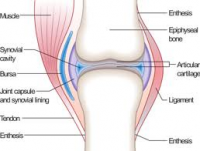 Hybrid inkjet printer used to create cartilage to potentially regenerate damaged joints.
Hybrid inkjet printer used to create cartilage to potentially regenerate damaged joints.
Computer Active reports that researchers have developed a method of 3D printing that can produce implantable cartilage with the intention of using it in the treatment of damaged joints in humans.
Using a “novel hybrid inkjet printer” combining “two low-cost fabrication techniques”, namely a traditional inkjet printer and an electrospinning machine, Dr James Yoo, MD of the Wake Forest Institute for Regenerative Medicine reportedly commented that their work “illustrates that a combination of materials and fabrication methods generates durable implantable constructs”.
The printer allows structures to be made from both natural and synthetic materials, increasing mechanical stability compared to that of structures made using an inkjet printer using just natural gel material as the synthetic materials “ensure the strength of the construct and natural gel materials provide an environment that promotes cell growth”.
To test the technique, the structures produced by the printer were implanted into mice for varying amounts of time, with findings showing that after eight weeks “the structures had developed properties that were typical of elastic cartilage”, suggesting that the technique has potential to be used with human patients.
The Recycler reported earlier this year on a 3D printer producing the first printed jaw to be successfully transplanted onto a patient, with the jaw being manufactured from titanium powder heated and fused together by a laser beam layer by layer.
